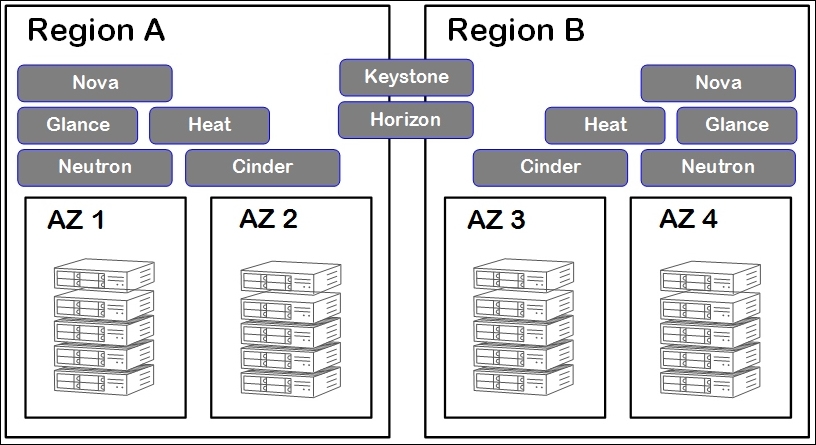Outside of just the plain awesomeness of being able to actively use more than one OpenStack region, the Active-Active cloud region approach provides the best use of your overall cloud investment. No more are the days of having to perform DR tests simply because the second site is not regularly used. Plus you gain the added bonus of a centralized management region. A win-win situation all over the place.
So, let's go deeper into the architecture in order to deliver an OpenStack Active-Active region. The following diagram explains the architecture in its simplest form:

The components of the preceding architecture are:
Two separate OpenStack cloud deployments, which in turn equates to two regions. In this example, we have Region A and Region B. These regions run the core OpenStack services except Keystone and Horizon. Each region can have any and as many complimentary AZs as you wish.
Create another OpenStack region solely dedicated to hosting the Keystone...



